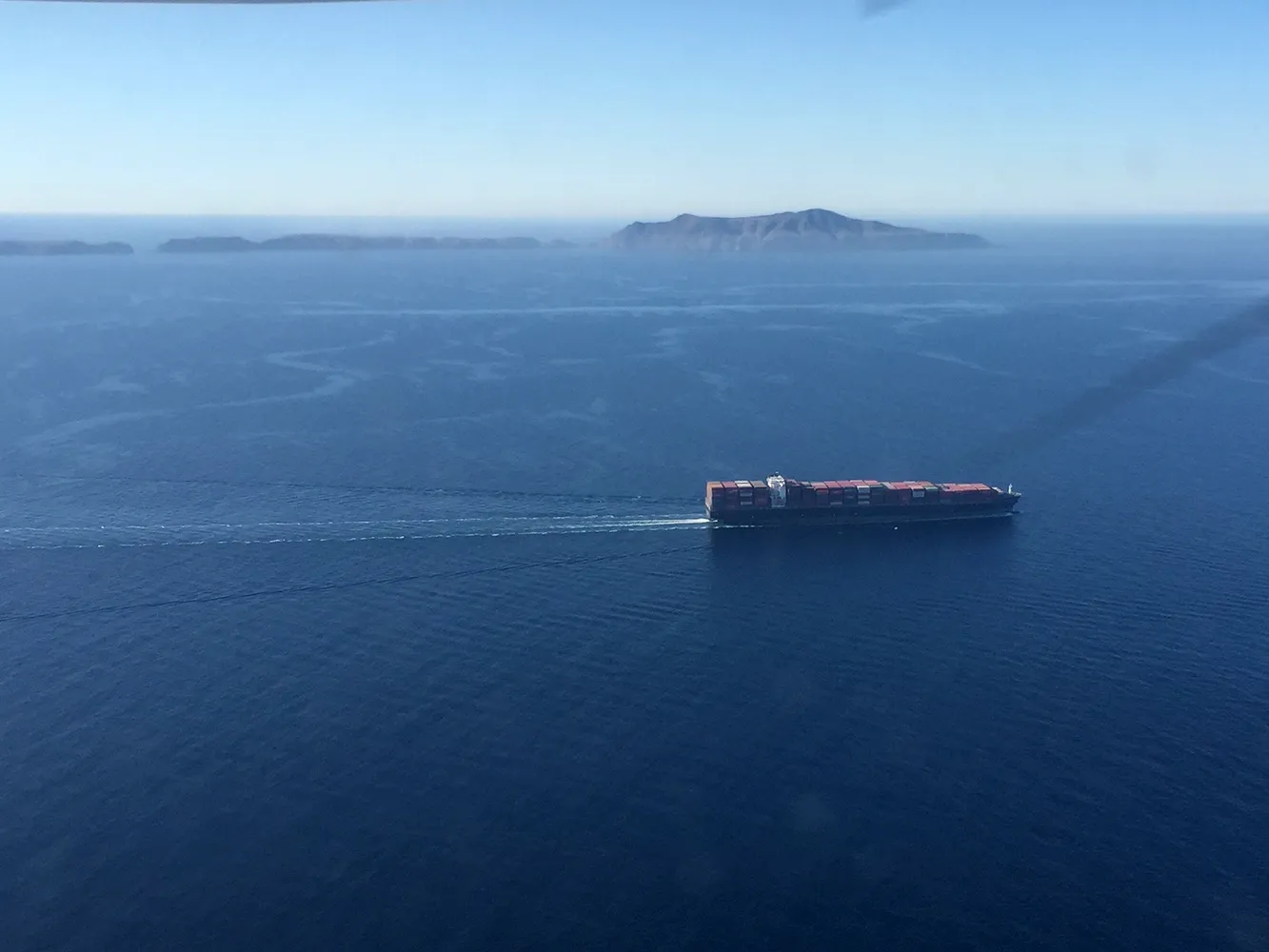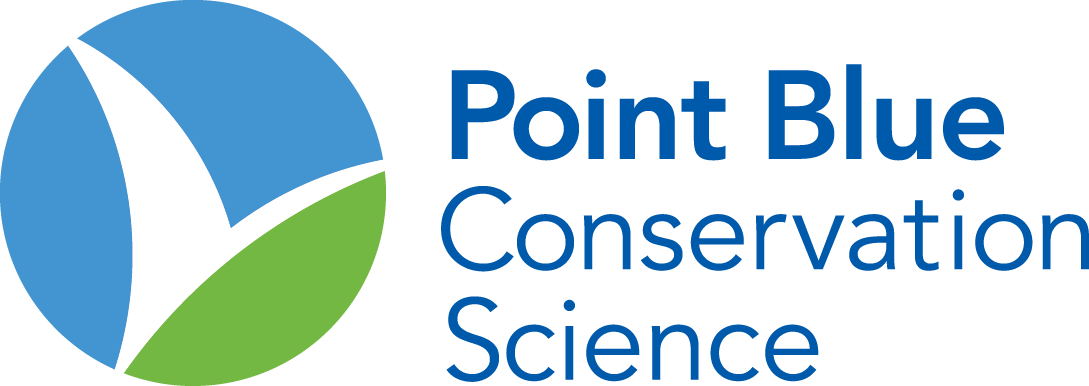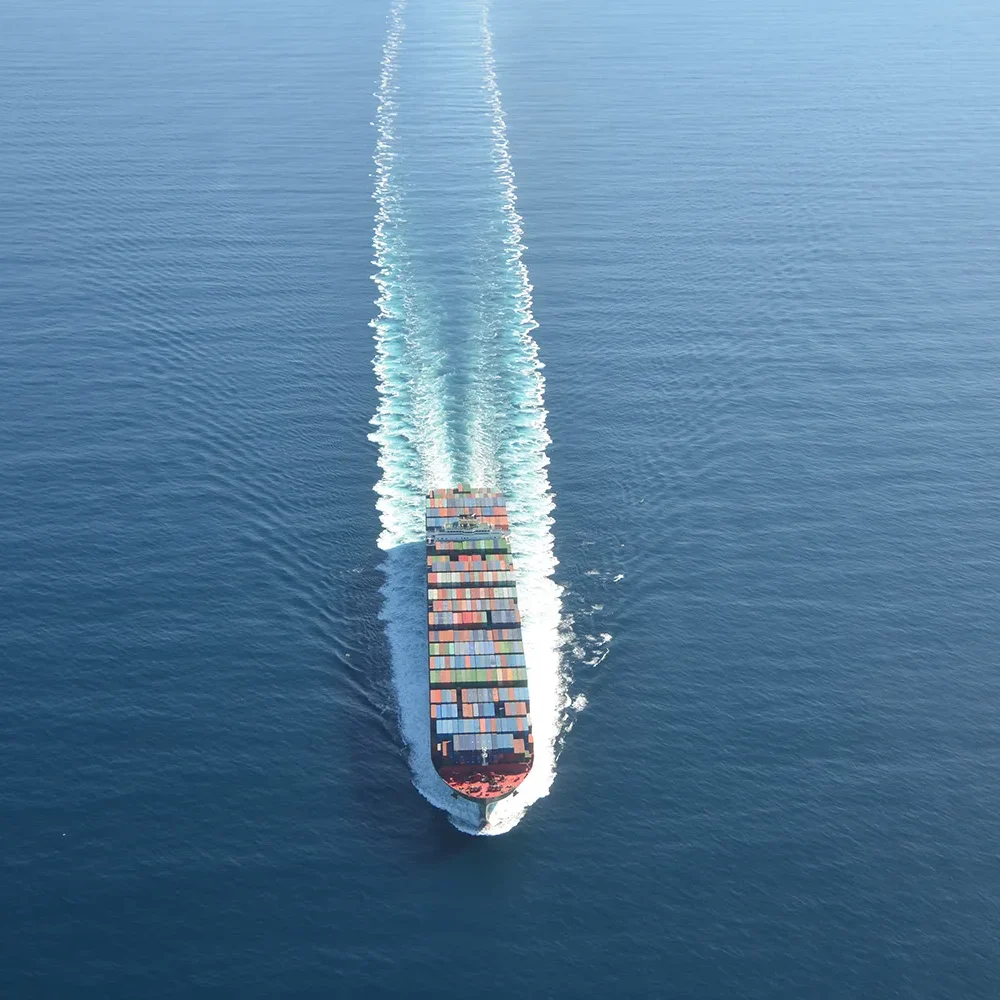
Photo: Jess Morten/NOAA
Why Blue Whales Blue Skies Works
The VSR season coincides with the time of year endangered whales and air pollution are most prevalent off the CA coast.
Traveling at 10 knots or less significantly reduces the risk of fatal ship strikes.
Participants provide valuable whale sightings data that is used in conjunction with scientific research/survey data.
BWBS quickly releases notices when large numbers of endangered whales are present in VSR zones to increase awareness of critical ship strike risk days to all mariners.
Methods for Measuring Whale Strikes
Ship strike risk is estimated from a model found in Rockwood et al. 2020. Components of the model depend on the encounter rate between whales and vessels, the probability of mortality given a collision, and the probability of active avoidance by whales.
Methods for Measuring NOx Reduction
Emission reductions are calculated for each season by looking at the difference in emissions between the participating vessels at their estimated baseline speed and the actual emissions at their VSR-compliant speeds.
Methods for Measuring Underwater Noise
Analysis of underwater radiated noise metrics (source level and noise level) at three sites, the Santa Barbara Channel, Monterey Bay, and San Francisco.



